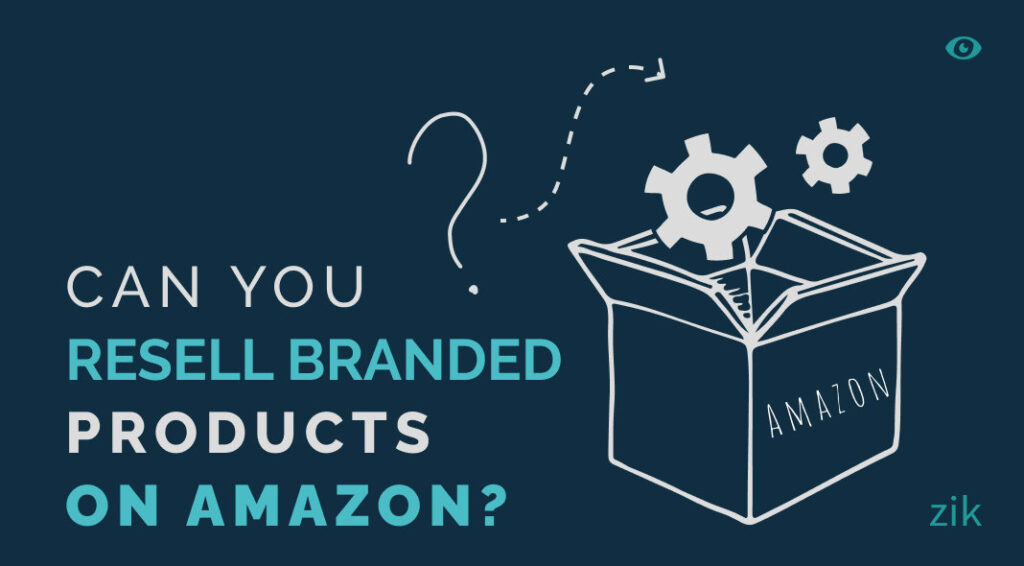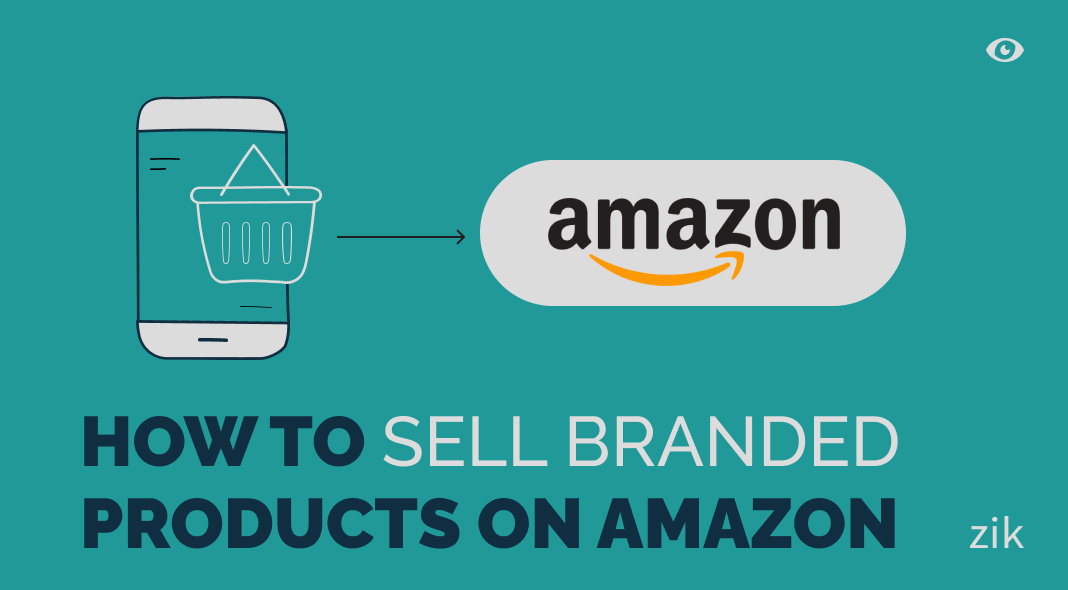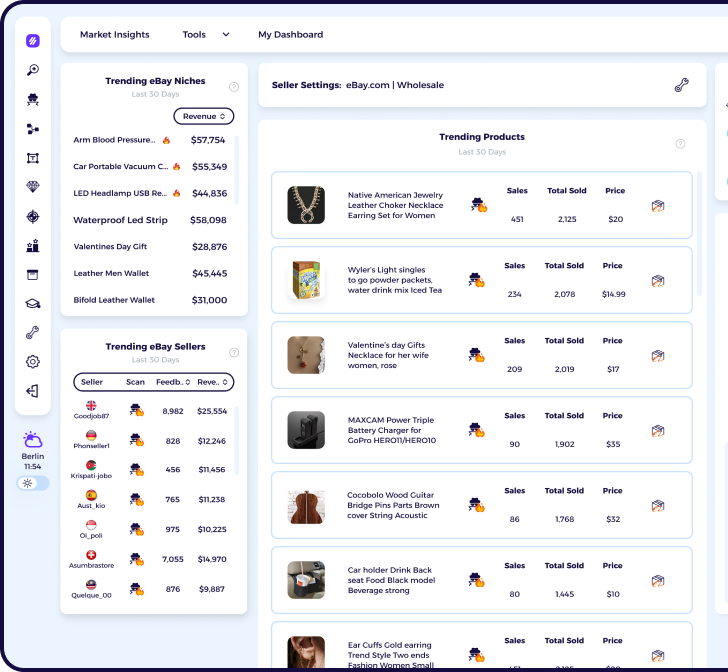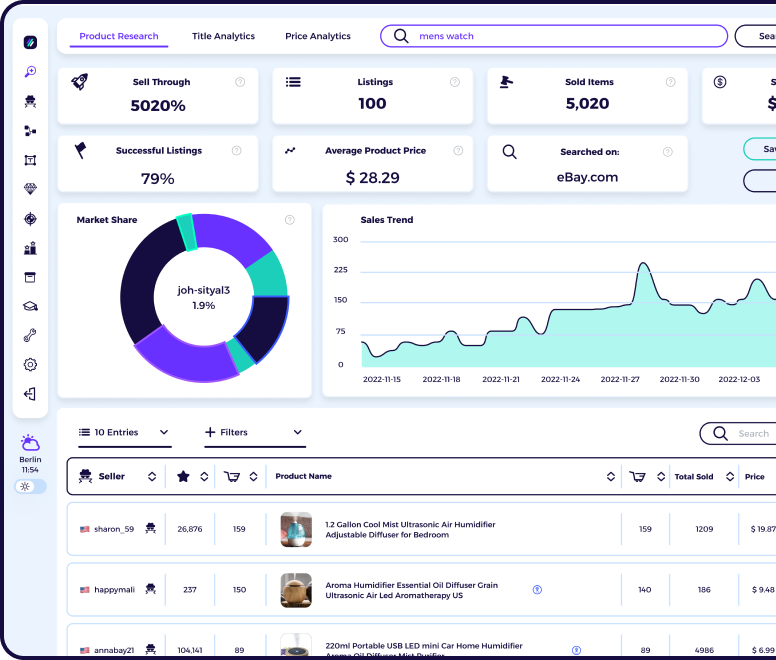Amazon’s evolution from a book retailer to the world’s largest e-commerce platform presents unique opportunities for selling branded products. Understanding Amazon’s policies and market demands is key to tapping into this lucrative arena.
Article Overview
What are branded products
Who can sell branded products on amazon
How To Be A Third-Party Seller On Amazon
How To Sell Branded Products On Amazon
Key Takeaways:
- ✔ Grasp Amazon’s policies for legal selling of branded products.
- ✔ Research and select profitable brands to sell.
- ✔ Leverage ZIK Analytics for market research to find hot products
What are branded products?
Branded products are labeled or brand-name items produced by an established and popular company rather than made by an individual. They can come in any form, from televisions to books to clothes. Moreso, people, trust branded products more and prefer to buy them than all other unbranded products.
A survey in the United States proves that 46 percent of customers would pay more to purchase from brands they can trust.
Who Can Sell Branded Products On Amazon?
As the largest online marketplace, Amazon sells over 12 million products, and in the United States alone, hundreds of millions of users visit the online platform. That’s why Amazon employs third-party sellers, rising to over 353 million products available for sale.
So many people wonder if selling on Amazon is for a type of person, but no, there are big brands that sell on Amazon, and there are individuals, also. Usually, for anyone willing to sell branded products on Amazon, you have to be a third-party seller or distributor of the product.
How To Be A Third-Party Seller On Amazon
Becoming an Amazon third-party seller can be a great way to make money online by selling products that other brands manufacture. Third-party sellers make up the vast majority of sellers on Amazon, accounting for over 50% of all units sold.
To start, you will need to register as a third-party seller and order products through the manufacturer or contact the Amazon fulfillment center to store and ship their products directly from their warehouse.
For the most part, third-party sellers follow a simple process: they find items they want to sell, list those items on Amazon, and add pictures and other relevant information about the products.
How To Sell Branded Products On Amazon
When you are an Amazon third-party seller, you and other sellers are both parties to the contract. You will earn some extra cash on the side as an Amazon third-party seller. Let’s consider how you can get started.
Research A Market Niche
Finding your market niche is the first step in deciding what products to sell on Amazon. You have to choose what interests you.
Simply put, it is your area of specialization in the Amazon marketplace. If you’re interested in a niche, such as music or books, find out about the trends of the products in that niche you’re trying to sell.
You can seamlessly find the best branded products to sell using Zik Analytics tool.
Select A Profitable Product Brand You Wish To Sell
When picking your product, consider how easy it will be for your customers to find what they are looking for and how much money you will make from each sale. You might be tempted to create a low-priced product, write a description, and get it listed on Amazon.
However, before doing this, you need to ensure that your product is selling well enough. Try to choose something with quite a few reviews on Amazon so that there is more of a chance of people finding your listing through the search function.
Evaluate the most popular ones in your market carefully. You don’t have to sift through mountains of data to find something that will sell well on Amazon; you need to look for things that fit a few basic criteria.
Join the Brand Registry
Entering your brand into Amazon’s brand registry is necessary if you intend to sell branded products on the platform. Applying for Amazon Standard Identification Numbers (ASINs) will ensure that no other seller will be able to list the same products from your pages.
You’ll need your brand’s trademark number, logo, and manufacturing country images to register your brand internationally.
Get Approved To Sell The Branded Products
To sell a branded product on Amazon, you have to secure permission from Amazon or the brand owner. While some manufacturers have no problem selling their products on multiple platforms, others will only work with select distributors.
Amazon will issue a copyright infringement complaint if you do not have the appropriate permissions from the copyright holder.
Take A Look At Your Suppliers And Inventor
You risk being accused of selling knockoffs if you deal in branded goods. For this reason, it is essential to examine all of your suppliers and double-check the legitimacy of the products they supply.
Also, keep all your invoices if there are any disputes with your suppliers, and you need to provide proof.
Implementing FBA To Your Selling Strategy
When your products sell, Amazon will handle the shipping for you if you participate in the Fulfillment by Amazon (FBA) program. Sales can be increased by as much as five times when using FBA, according to data compiled from years of digital marketing and Amazon sales.
Your products may sell more quickly and generate more revenue through FBA, but the fees are higher than those of merchant-fulfilled listings. Another benefit is saving time and effort on tasks like individually wrapping and shipping packages.
Stick To Amazon Guidelines And Policies
Like other e-commerce platforms, Amazon has many rules and regulations, although, unlike eBay, those rules and regulations rarely change. Ensure you are familiar with Amazon’s policies before selling branded products on the site.
Seller Central contains all the specific policies, so it’s easy to ensure you follow them.
Get The Buy Box
The buy box may be the answer to your prayers for higher sales. When a customer clicks on a result, the buy box should be the first thing they see.
The buy box is awarded to the vendor who offers the best overall value to the customer for a specific product. Using Amazon’s bundling policy, you can also include reselling branded products that are one-of-a-kind.
Provide Accurate Product Description
Listings should be as accurate and detailed as possible to avoid confusing potential buyers. Customers are less likely to buy from you if they have doubts about whether you carry the required products.
Include relevant keywords in your description to make buyers easily find your listing. If you give them detailed descriptions, they will recognize that you have the brands and products they want.
Respond Promptly To Your Customers
If a customer contacts you about a product, Amazon requires you to respond within 24 hours or face a negative rating. You should periodically check Seller Central for customer questions so you never miss opportunities.
The loyalty of your customers can be created and pushed forward in this way.
Branded products are not new, but Amazon has changed its marketplace rules to allow these third-party sellers on the website to give brands a better opportunity to sell their products.
Amazon’s Policy To Sell Branded Products
Amazon sellers have a responsibility to sell items by Amazon’s policies. It is crucial for you, as the seller, to know what Amazon’s policies are and how this will impact your ability to work on Amazon.
Here are some policies for sellers;
- Unauthorized third-party warranties
You can sell third-party warranties for your products if you comply with the terms of Amazon’s Sell Secure policy.
However, if a user goes through an unauthorized warranty provider or claims that the product was defective, Amazon may be able to invalidate your sale. It depends on the severity of the alleged violation and what type of products you sell.
- Listing counterfeit items
Listing counterfeit items on Amazon is not allowed. If you list a knockoff product determined to be counterfeit, Amazon will immediately pull your product and suspend your selling privileges. To protect its brand, Amazon can legally remove your listing without notification.
- Copyright infringement
If you sell items protected by copyright law, such as books or music recordings, you must ensure you have the right to sell those items. A simple check of your copyright will ensure that you are easily listed on Amazon.
If it turns out that your product infringes on someone else’s intellectual property rights or if the seller’s trademark is not properly licensed, Amazon can remove your listing.
- Selling adult items
Since Amazon is an open platform that sells products from third-party sellers and Amazon itself, they have strict policies against adult items.
This item includes items such as sexual enhancements and sex toys.
If you are unsure whether your items are included in this category, the best way to find out is to contact Amazon’s Seller Support.
- Items that are illegal in the United States
Amazon has a policy that disallows any product or service users can use illegally in the United States. These illegal items could include, but are not limited to, stolen product codes and stolen credit cards.
There are also laws in other countries that prohibit the sale of illegal items on Amazon.
What to Avoid Doing:
- ✘ Avoid selling counterfeit or unauthorized branded products.
- ✘ Don’t ignore Amazon’s regulations and guidelines.
- ✘ Be vigilant against selling knockoff products from unverified suppliers.
How to Prevent Issues:
- ✔ Stay informed about Amazon’s latest selling policies to ensure compliance.
- ✔ Engage with verified suppliers to avoid counterfeit products.
- ✔ Regularly use ZIK Analytics for up-to-date market trends and demands analysis.
FAQ
How much do Amazon sellers make?
Amazon sellers earn depending on the products they sell. According to a report from 2013, Amazon sellers who were active within the past six months and had more than three items for sale on Amazon’s U.S. marketplace earned $3,000 on average during that period.
How Much Does Amazon take from my sales?
Amazon charges 15% of the products you sell and 20% of any shipping & handling fees. However, it mostly depends on the product’s category.
Conclusion
Since Amazon launched its third-party marketplace in 2008, the company has seen a rise in the number of individuals selling their wares through the platform. Both the number of potential buyers and the number of prospective sellers have grown substantially in recent years.
Creating an Amazon seller account is simple. You can do this in several ways, some of which depend on whether or not you are buying your products or creating a listing for someone else’s product.
Earning money on Amazon’s marketplace can be simple once your seller account has been approved, but the process can take some time. However, the more time and effort you put into your business, the better your chances of success.







